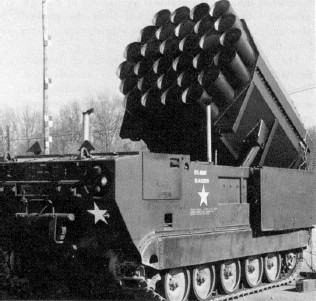Though one wouldn’t expect much from an armored vehicle developed by the Food Machinery Corporation, the M113 has become ubiquitous on the battlefield. In nearly 60 years of service, the M113 has found its way into the inventories of over 20 different countries and served in war zones across the globe. As various militaries realized the utility of the platform, they greatly modified them for their own needs.
Here are the 9 coolest things militaries have done with the M113
1. Armored Cavalry Assault Vehicle

Early in its service in Vietnam, it became apparent that the M113 needed to be more than just a “battle taxi” — it needed to bring some guns to the fight. To remedy this, Vietnamese, and later American, units made field-expedient improvements that led to the development of the Armored Cavalry Assault Vehicle, or ACAV.
Mounting a single .50 caliber machine gun and two M60’s behind armored gun shields, the ACAV became a rolling gun platform that could deliver massive firepower.
2. M132 Armored Flamethrower

The jungles of Vietnam led to another development of the M113 — the M132 Flamethrower. Replacing the cupola with a flame turret and filling the passenger compartment with 200 gallons of flame fuel, the M132 was the mechanized equivalent of a fire-breathing dragon.
3. Missile Launcher

Numerous countries used the M113 platform to launch missiles, particularly anti-aircraft missiles. But, for the United States the M113 would join the nuclear triad when it was modified as a Transporter Erector Launcher (TEL) for the Pershing I nuclear missile system. Other modified 113’s served as support vehicles in these operations.
4. Medium Reconnaissance Vehicle

Almost as soon as the Australians received the M113’s, they began splicing them together with other components. First, they took the turrets from their retiring Saladin armored cars and mounted them on the M113 to make the Fire Support Vehicle.
This vehicle was just an interim measure, though, while the Medium Reconnaissance Vehicle was being developed. This vehicle used the newer turret from British FV101 Scorpion tanks along with upgrades to the hull.
5. Air Defense Anti-Tank System

The Air Defense Anti-Tank System, or ADATS, was a unique dual-purpose system designed to fight low flying aircraft and oncoming tanks. The Canadians mounted it on the ever-versatile M113 for mobility purposes. Armed with eight missiles and a power search radar, this created a formidable piece of defensive equipment.
6. M163 VADS

The United States used the M113 for a variety of anti-aircraft platforms, but the coolest was the M163 VADS.
VADS, or Vulcan Air Defense System, was the anti-aircraft platform for the M61 20mm Gatling Gun used in American fighter aircraft. With all systems mounted on the venerable M113, the VADS, in conjunction with short-range missile systems, provided a highly mobile and deadly effective anti-aircraft system.
In Israeli service, the VADS was credited with downing a MiG 21 while under heavy fire and transitioning from ground targets to aerial.
7. Arisgator

In the late 1990s, the Italian defense firm ARIS SpA made one of the most radical modifications to the M113 by making it fully ship-to-shore capable.
The M113 was always designed to be amphibious but the modifications made by ARIS, known as the Arisgator, put the M113 in league with the USMC’s Amtracs. Buoyancy was improved by adding a long bow section as well as two stern sections that also mounted propellers to move the 113 through the water.
8. Danish Mk I/Egyptian Infantry Fighting Vehicle

What do you get when you mount a Swiss autocannon and a German machine gun in an Italian turret and marry that to and American APC?
You get Denmark’s version of the M113, known as the Mk I. Mounting a Oerlikon-Contraves 25mm autocannon, a German MG3 coaxial 7.62mm machine gun, and an Italian Oto Melara turret with advanced optics the Danes got an IFV just to their liking.
In the same vein, but uniquely more American, the Egyptians upgraded their large fleet of 113’s with the powerful turret assembly from the M2 Bradley to create the Egyptian Infantry Fighting Vehicle.
9. Armored Infantry Fighting Vehicle

The Armored Infantry Fighting Vehicle, or AIFV, was initially sought by the United States Army for its own Infantry Fighting Vehicle but when the M2 Bradley was chosen instead other governments picked up the idea.
The AIFV uses a modified M113 platform and mounts a one-man turret with a 25mm autocannon and a 7.62mm machine gun set behind the engine on the vehicle’s right side. The crew compartment holds seven troops, facing out, with five firing ports for mounted fighting.


